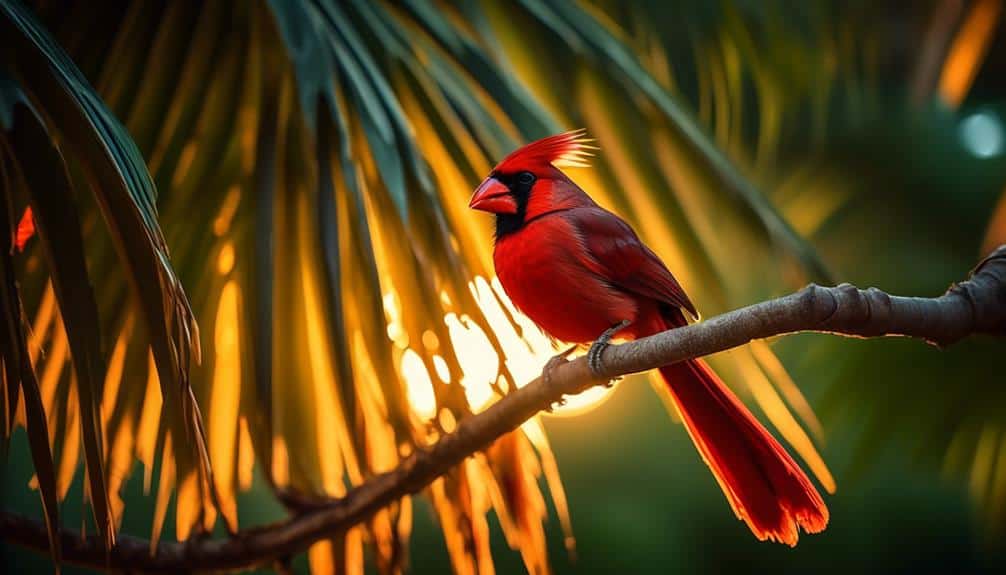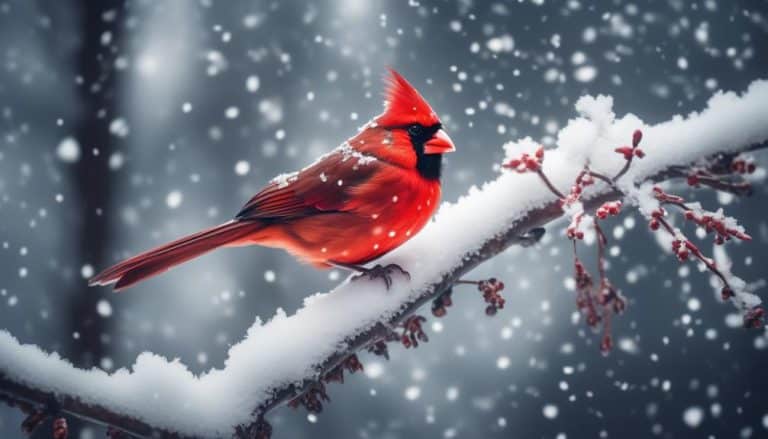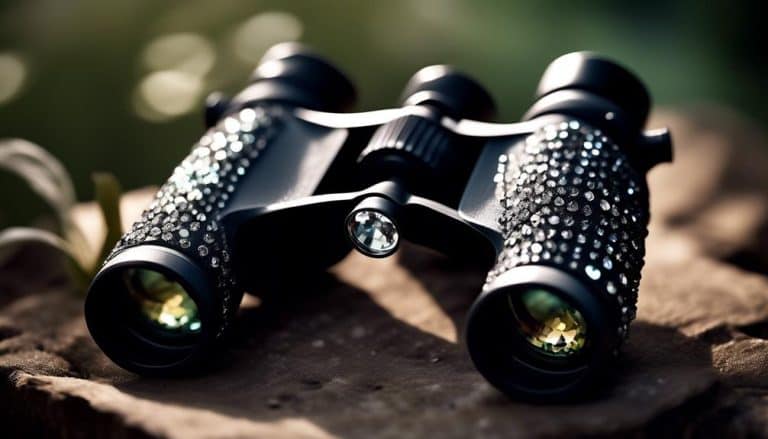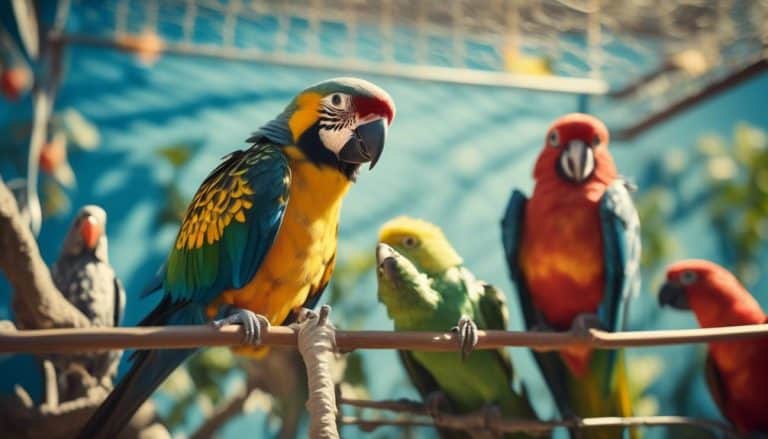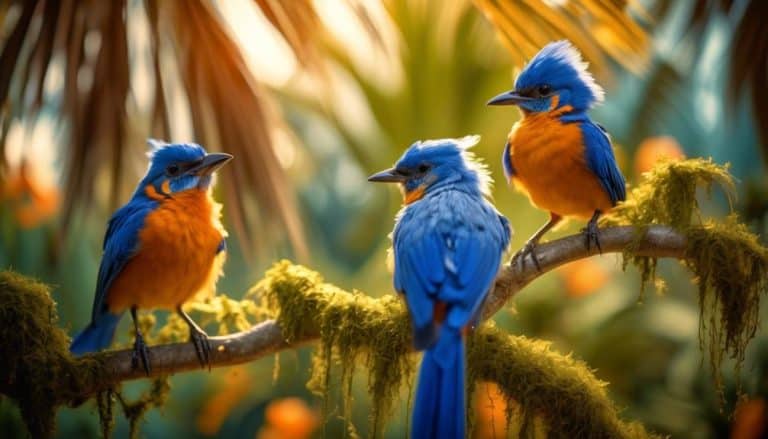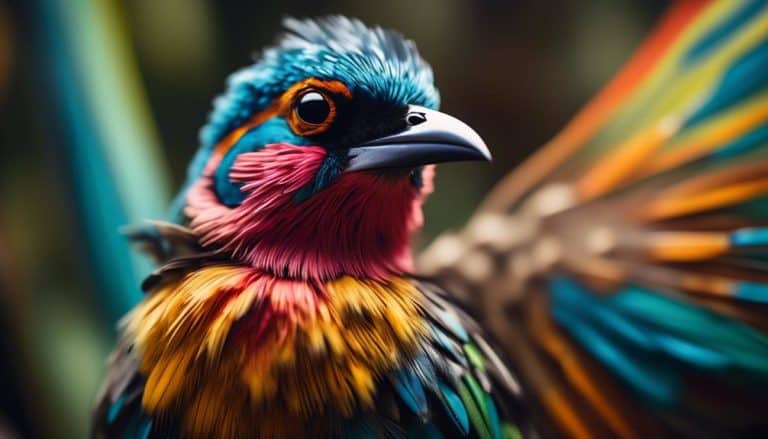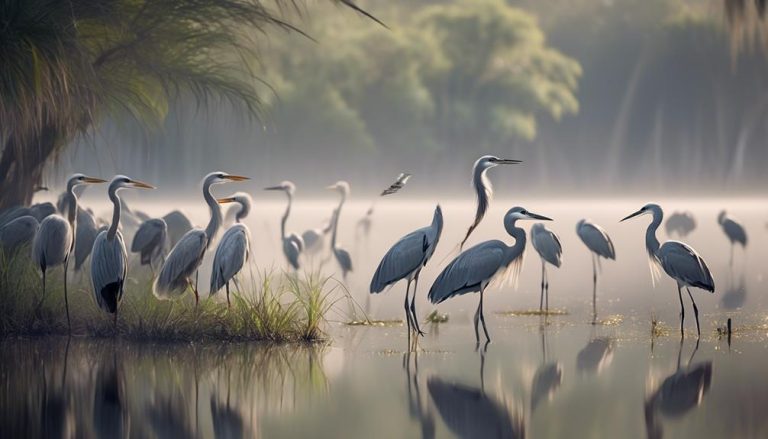As the saying goes, 'birds of a feather flock together,' and when it comes to Florida Cardinal Birds, this couldn't be more true. These vibrant creatures, with their fiery red feathers and distinctive crest, have always fascinated me.
However, there is much more to these avian residents of the Sunshine State than meets the eye. From their fascinating breeding and nesting behavior to their unique feeding habits and diet, there is a wealth of information to uncover.
But what about their conservation status and the threats they face? Well, let's just say it's a story that deserves our attention.
Distribution and Habitat
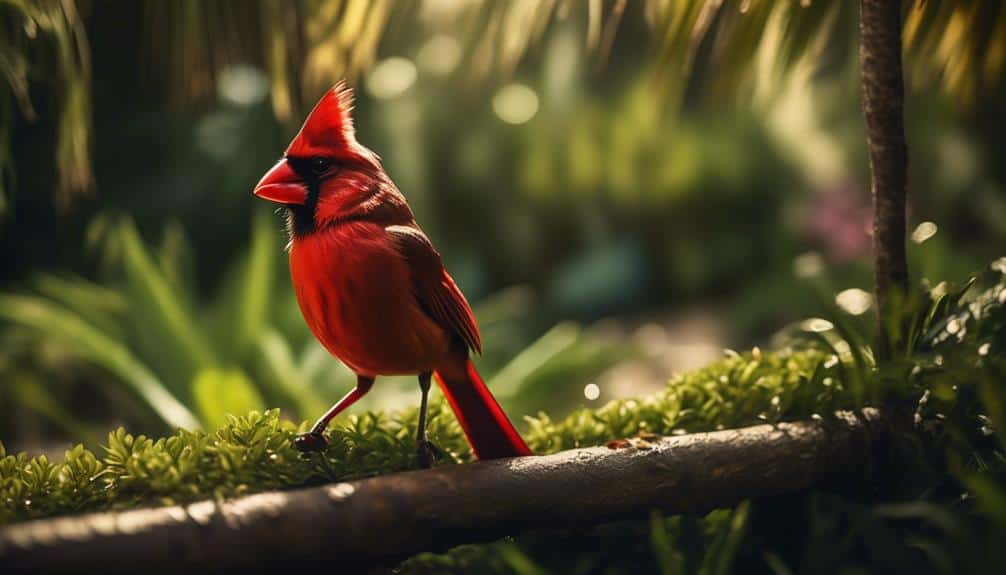
Florida Cardinal Birds are commonly found in the southeastern United States, where they inhabit a variety of habitats including forests, woodlands, and suburban areas. These birds have experienced a range expansion over the years, extending their distribution beyond their historical range. This expansion can be attributed to several factors, including changes in land use and climate.
One significant factor contributing to the range expansion of Florida Cardinal Birds is habitat destruction. As urbanization and development continue to encroach upon natural habitats, these birds have adapted to suburban areas, finding suitable nesting and foraging sites in residential neighborhoods. This ability to adapt to human-altered landscapes has allowed the population of Florida Cardinal Birds to thrive and expand into new areas.
However, while the range expansion of Florida Cardinal Birds may seem positive, it's important to consider the impact of habitat destruction. As natural habitats are destroyed to make way for urban development, the biodiversity of these areas is significantly reduced. This not only affects the Florida Cardinal Birds but also other species that rely on these habitats for survival.
It's crucial to strike a balance between human development and the preservation of natural habitats to ensure the long-term survival of these birds and the ecosystems they inhabit.
Physical Characteristics
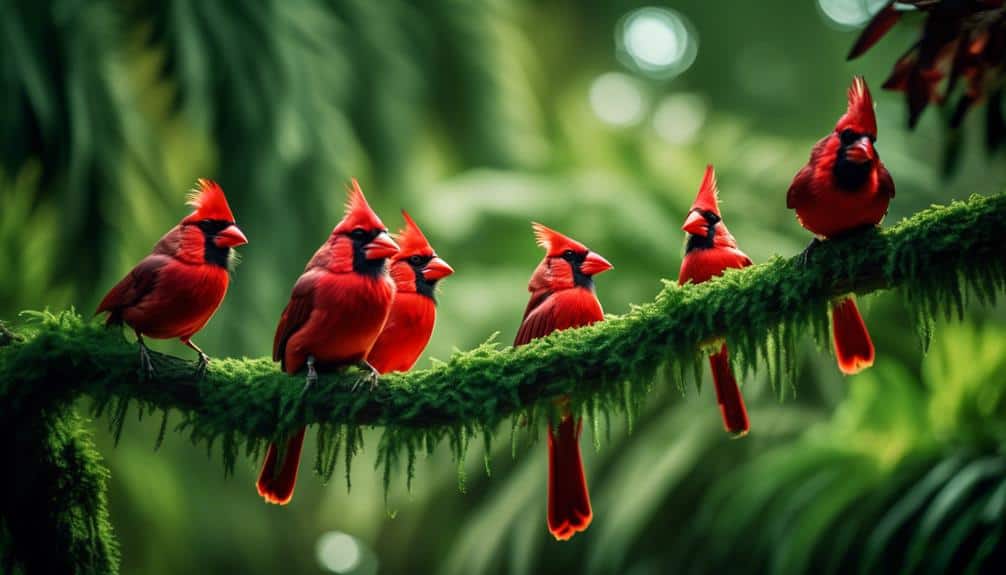
The physical characteristics of Cardinal Birds in Florida are distinct and unique among avian species. These birds are known for their vibrant plumage, with the males displaying a brilliant red color on their bodies and crests, while the females have a more subdued combination of gray and red. However, it's important to note that there are color variations within the species, with some individuals exhibiting a more orange or even yellow hue.
Apart from their striking colors, Cardinal Birds in Florida also possess a strong beak that's adapted for cracking open seeds and fruits. Their wings are short and rounded, enabling quick bursts of flight and precise maneuvering through dense vegetation. Additionally, their tails are long and slightly notched, aiding in stability and balance during flight.
Another characteristic that sets Cardinal Birds apart is their distinct song patterns. Males are known for their melodic and elaborate songs, which they use to defend their territory and attract mates. Each male has its unique song, although there are similarities among individuals from the same region. The songs consist of a variety of whistles, trills, and warbles, creating a distinctive and pleasant chorus in the Florida bird community.
Breeding and Nesting Behavior
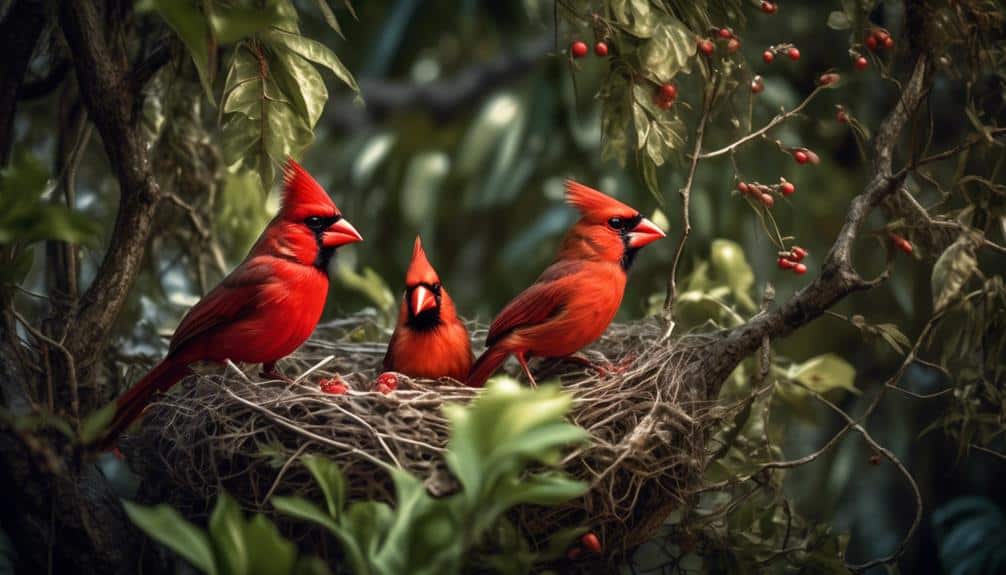
Breeding and nesting behavior of Cardinal Birds in Florida is characterized by precise mating rituals and the construction of intricate nests.
The courtship behavior of these birds is fascinating to observe. Here are three key aspects of their courtship behavior:
- Singing: Male cardinals are known for their beautiful songs, which they use to attract females. Their melodious tunes echo through the Florida forests, signaling their readiness to mate and defending their territory from other males.
- Displays: During courtship, male cardinals perform elaborate displays to impress females. They fluff their feathers, raise their crests, and hop around in a rhythmic manner. These displays showcase their physical prowess and attractiveness as potential mates.
- Feeding: Male cardinals also demonstrate their devotion by feeding the female. They search for insects, seeds, and berries and present them to the female as a token of their affection. This behavior not only nourishes the female but also establishes a bond between the pair.
Once courtship is successful, the female cardinal takes charge of nest construction. She meticulously weaves small twigs, grass, and leaves together to create a sturdy and well-hidden nest. The nest is usually built in dense shrubs or trees, providing protection from predators.
The female lays 2-4 eggs, which she incubates for approximately 12 days. Both parents take turns feeding the chicks until they fledge, which takes about 10-12 days.
Feeding Habits and Diet
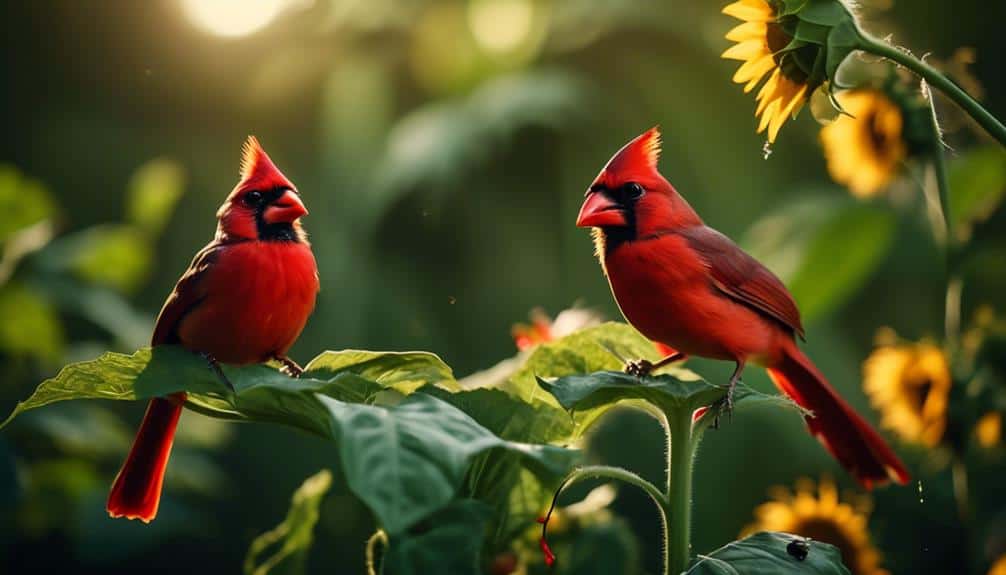
After successfully attracting a mate and constructing a well-hidden nest, the feeding habits and diet of Florida Cardinal Birds become crucial in ensuring the survival and growth of their offspring. The feeding behavior of these birds is both interesting and important to study.
Florida Cardinal Birds are primarily seed eaters. Their diet consists of various seeds, including sunflower seeds, safflower seeds, and millet seeds. They're also known to consume fruits and berries, such as elderberries and blackberries. In fact, their diet can vary depending on the availability of food sources in their habitat.
Bird feeders play a significant role in the feeding habits of Florida Cardinal Birds. These birds readily visit feeders, especially if they're stocked with their preferred seeds. They're known to be attracted to feeders that offer sunflower seeds, which provide them with essential nutrients. By providing a consistent source of food through bird feeders, we can help support the survival and growth of their offspring.
Observing the feeding behavior of Florida Cardinal Birds can provide valuable insights into their habitat preferences and the availability of food sources. It also highlights the importance of maintaining bird feeders and ensuring they're stocked with appropriate seeds to support the well-being of these beautiful birds and their young.
Conservation Status and Threats
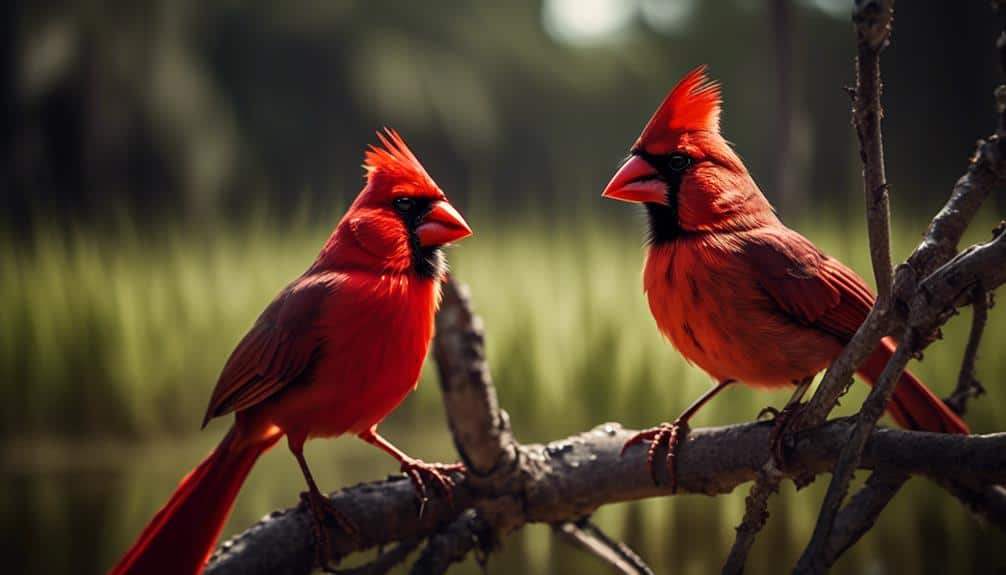
The conservation status of Florida Cardinal Birds, specifically their vulnerability to various threats, is a subject of paramount importance. These beautiful birds face numerous challenges that require urgent attention and conservation efforts. Here are three key threats they currently face:
- Habitat Loss: The rapid urbanization and expansion of human settlements in Florida have resulted in the destruction and fragmentation of the Cardinals' natural habitat. This loss of suitable nesting and foraging areas directly impacts their survival and reproductive success.
- Climate Change: Rising temperatures and altered rainfall patterns pose a significant threat to Florida Cardinal Birds. These changes can disrupt their breeding cycles and food availability, leading to reduced population numbers and potential range shifts.
- Human Impact: Activities such as deforestation, pollution, and the introduction of non-native species further exacerbate the challenges faced by these birds. Pesticides and insecticides used in agriculture can contaminate their food sources, while predators not native to the region can prey upon them.
To mitigate these threats and ensure the long-term survival of Florida Cardinal Birds, concerted conservation efforts are crucial. These efforts should include habitat restoration, the establishment of protected areas, and public awareness campaigns to reduce human impact on their environment.
Frequently Asked Questions
How Long Do Florida Cardinal Birds Typically Live?
Florida cardinal bird lifespan is influenced by various factors. These can include habitat quality, predation, diseases, and availability of food and water. Understanding these factors can help us determine how long Florida cardinal birds typically live.
Do Florida Cardinal Birds Migrate During Certain Seasons?
During certain seasons, bird species in Florida migrate in response to changing weather and food availability. Climate change has disrupted these migration patterns, impacting the timing and routes of bird movement.
Are There Any Predators That Pose a Threat to Florida Cardinal Birds?
Predators have a significant impact on the survival of Florida cardinal birds. Conservation efforts aim to mitigate this threat by implementing measures such as habitat protection and predator management strategies.
What Is the Typical Clutch Size for Florida Cardinal Birds?
Typically, the clutch size for Florida cardinal birds is between 2 to 4 eggs. Various factors, such as habitat quality, food availability, and parental condition, influence the size of their clutches.
Do Florida Cardinal Birds Engage in Any Unique Courtship Rituals?
Florida cardinal birds engage in unique courtship rituals. These behaviors are part of their breeding habits and involve displays of bright plumage, songs, and elaborate dances to attract potential mates.
Conclusion
In conclusion, the Florida cardinal birds, with their vibrant plumage and melodious songs, are a fascinating species to study.
They're primarily found in the southern regions of Florida, where they thrive in a variety of habitats, from woodlands to urban areas.
Their breeding and nesting behavior is intricate, and they've a diverse diet, feeding on seeds, fruits, and insects.
Despite facing some conservation threats, these charismatic birds continue to inspire awe and appreciation in bird enthusiasts.

